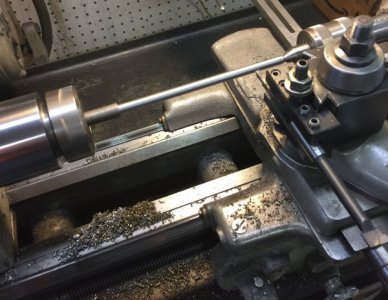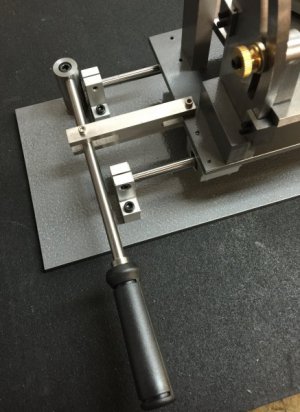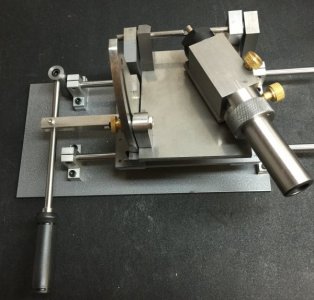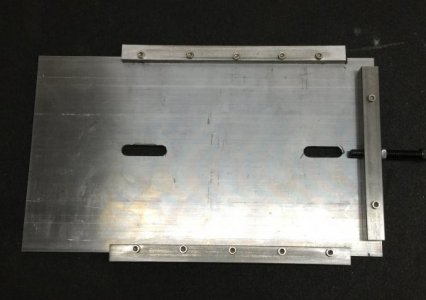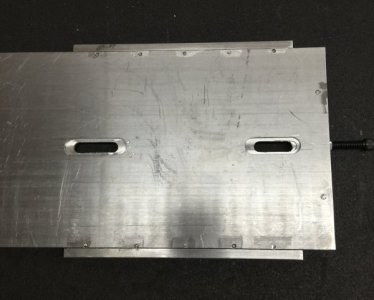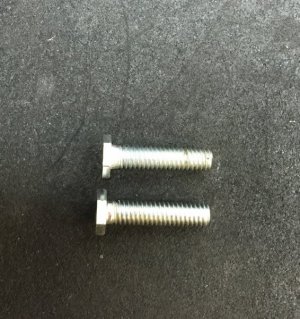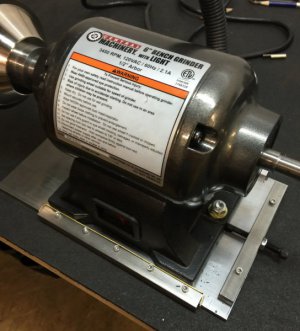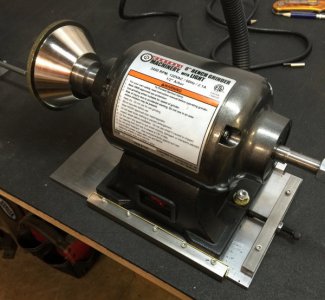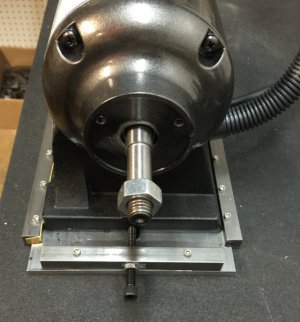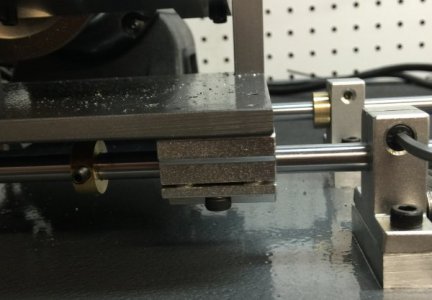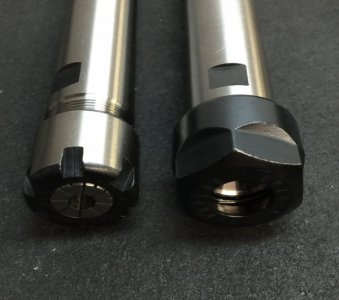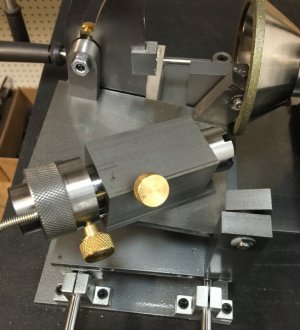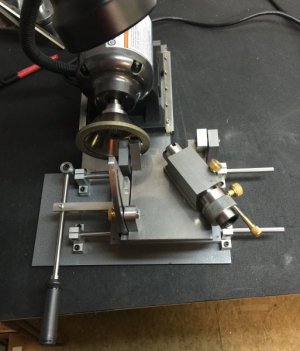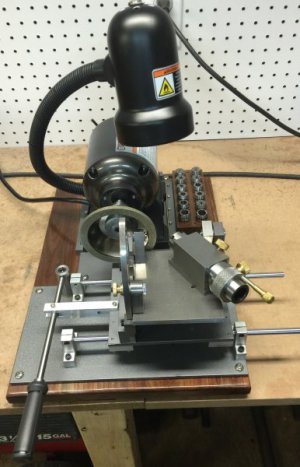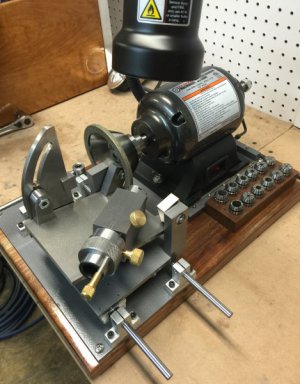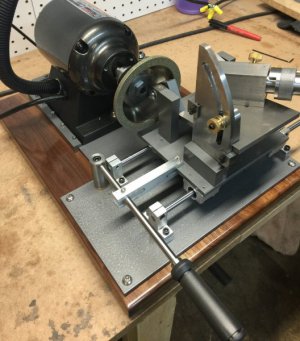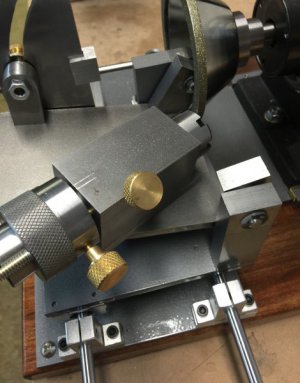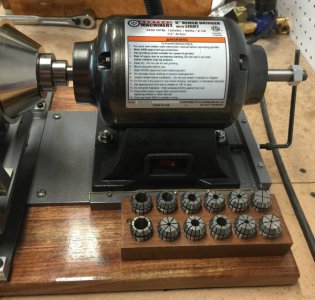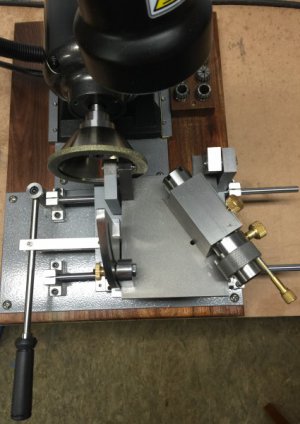I turned the collet block for the drill sharpener.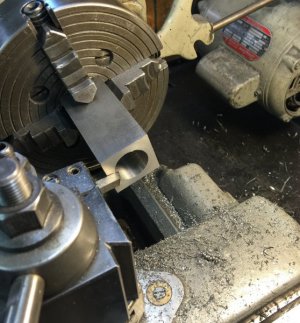 After boring the block to fit the collet chuck, the rear end must be faced to be square with the bore.
After boring the block to fit the collet chuck, the rear end must be faced to be square with the bore.
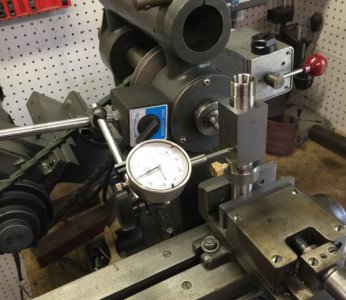 The block and chuck assembly is put in a vise and the rotation of the block is checked for being exactly 180 degrees. This is important so the flutes will be equal and alike.
The block and chuck assembly is put in a vise and the rotation of the block is checked for being exactly 180 degrees. This is important so the flutes will be equal and alike.
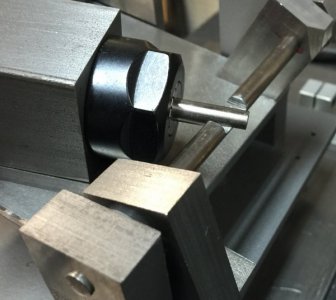 The assembly is then set on the trunnion table with a half flat bar in the chuck. The chuck is shimmed up so the two half bars match. This will tell how thick the pad needs to be so everything is centered on the axis of the trunnions.
The assembly is then set on the trunnion table with a half flat bar in the chuck. The chuck is shimmed up so the two half bars match. This will tell how thick the pad needs to be so everything is centered on the axis of the trunnions.
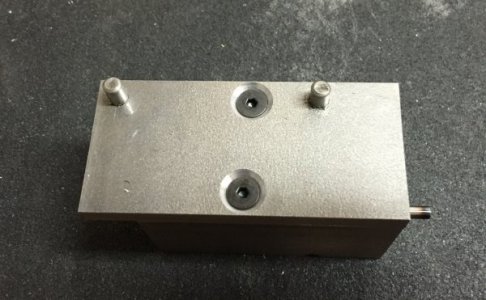 The pad is fastened to the collet block once it is the proper thickness. The pins are also installed. These are held in place with lock tite.
The pad is fastened to the collet block once it is the proper thickness. The pins are also installed. These are held in place with lock tite.
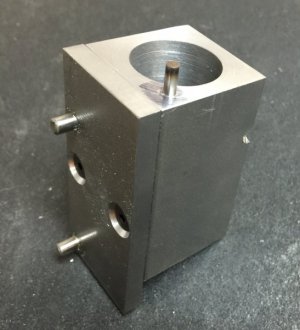 A .125 dowel pin is inserted in the rear face of the collet block. This is the stop pin for the 180 degree rotation.
A .125 dowel pin is inserted in the rear face of the collet block. This is the stop pin for the 180 degree rotation.
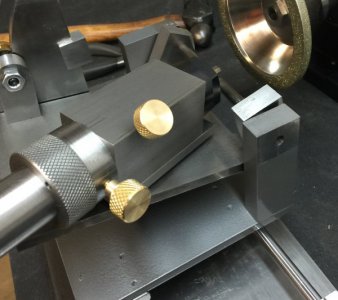
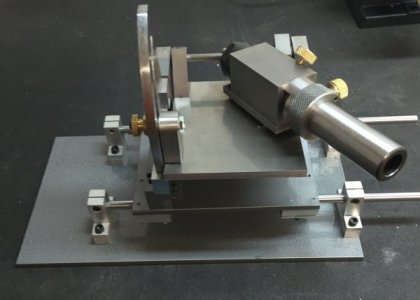 The linear bearing supports are fasten to the base plate which has been painted like the sliding table.
The linear bearing supports are fasten to the base plate which has been painted like the sliding table.
This pretty much completes the assembly. Now it will be set on a base and the motor will get mounted with it.
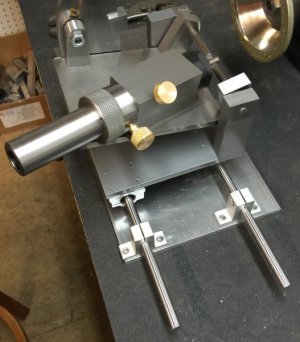
 After boring the block to fit the collet chuck, the rear end must be faced to be square with the bore.
After boring the block to fit the collet chuck, the rear end must be faced to be square with the bore. The block and chuck assembly is put in a vise and the rotation of the block is checked for being exactly 180 degrees. This is important so the flutes will be equal and alike.
The block and chuck assembly is put in a vise and the rotation of the block is checked for being exactly 180 degrees. This is important so the flutes will be equal and alike. The assembly is then set on the trunnion table with a half flat bar in the chuck. The chuck is shimmed up so the two half bars match. This will tell how thick the pad needs to be so everything is centered on the axis of the trunnions.
The assembly is then set on the trunnion table with a half flat bar in the chuck. The chuck is shimmed up so the two half bars match. This will tell how thick the pad needs to be so everything is centered on the axis of the trunnions. The pad is fastened to the collet block once it is the proper thickness. The pins are also installed. These are held in place with lock tite.
The pad is fastened to the collet block once it is the proper thickness. The pins are also installed. These are held in place with lock tite. A .125 dowel pin is inserted in the rear face of the collet block. This is the stop pin for the 180 degree rotation.
A .125 dowel pin is inserted in the rear face of the collet block. This is the stop pin for the 180 degree rotation.
 The linear bearing supports are fasten to the base plate which has been painted like the sliding table.
The linear bearing supports are fasten to the base plate which has been painted like the sliding table.This pretty much completes the assembly. Now it will be set on a base and the motor will get mounted with it.


